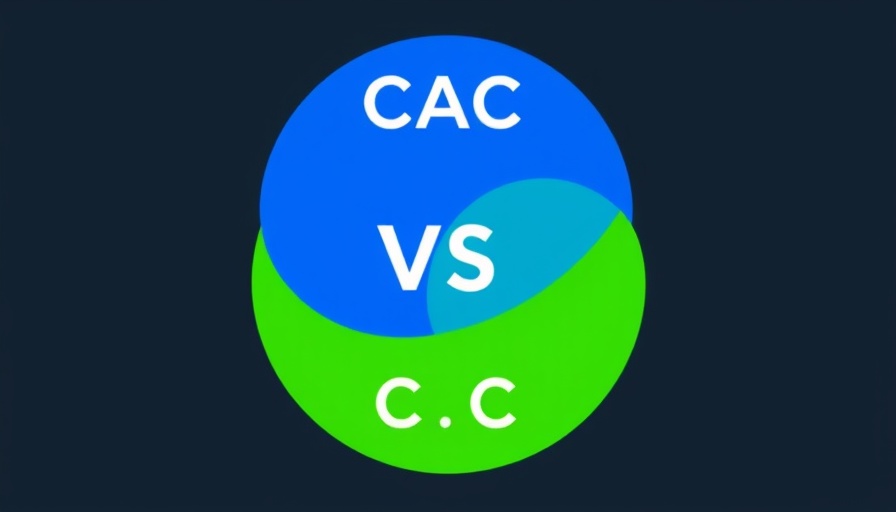
Understanding Customer Acquisition Cost (CAC) and Cost Per Acquisition (CPA)
In the competitive world of digital marketing, being cost-effective is crucial for businesses. Two key metrics, Customer Acquisition Cost (CAC) and Cost Per Acquisition (CPA), play a pivotal role in understanding how effectively a company is attracting customers. CAC refers to the total cost a business spends to acquire a new customer. This includes marketing expenses, salaries for sales staff, and any other costs directly related to attracting new clients. In contrast, CPA is specifically focused on the cost incurred to acquire a single customer through online advertising. While both terms relate to acquisition costs, understanding their subtle differences can help businesses strategize effectively.
The Importance of Optimizing CAC and CPA
By focusing on both CAC and CPA, businesses can better evaluate their marketing strategies and find efficiencies that lead to increased profitability. A lower CAC indicates better efficiency in acquiring customers, whereas a lower CPA suggests a well-optimized advertising strategy. This optimization can significantly impact a firm's return on investment (ROI), ultimately contributing to the company's growth and sustainability. Efficient customer acquisition ensures that businesses can reinvest their savings into other avenues of growth, such as product development or improved customer service.
Engaging the Right Audience: Strategies for Success
To truly lower CAC and CPA, businesses need to engage the right audience effectively. This includes utilizing targeted advertisements that speak directly to potential customers, maximizing the impact of social media marketing, and employing content marketing strategies that resonate with users. With evolving trends in social media and online behavior, businesses must stay ahead of the curve by constantly refining their targeting methods. Tools like Google Ads and social media analytics can provide insights needed to adjust strategies swiftly.
Future Trends to Consider in Customer Acquisition
As we transition into a future increasingly influenced by AI and digital tools, companies should consider how these innovations can assist in lowering CAC and CPA. For instance, automation tools can streamline marketing efforts and lead to more targeted advertising, enhancing customer engagement. Additionally, programmatic advertising allows for real-time bidding on ad spaces, ensuring businesses reach their ideal audience at optimal costs. Companies that embrace these digital marketing trends will likely see substantial improvements in both customer acquisition costs.
Common Misconceptions About CAC and CPA
One common misconception is that a lower CPA always translates to a lower CAC. This isn't necessarily true; while a business may run cost-effective ads, if the overall strategy is poor, the long-term CAC may remain high. Therefore, it's vital for marketers to look at both metrics in tandem. Understanding that optimal marketing strategies require a balance between cost-per-click and overall expenditure is critical.
Analytics and Data Reporting: The Foundation of Effective Marketing
To effectively manage CAC and CPA, it's important to invest time and resources in analytics and data reporting. Using tools like Google Analytics can help businesses understand their audience better, tracking what drives conversion rates and where customers drop off in the sales funnel. Regularly reviewing this data helps refine marketing strategies and can lead to actionable insights that ultimately lower acquisition costs.
Practical Tips for Reducing CAC and CPA
1. **Utilize A/B Testing**: Implement A/B testing to determine which marketing messages resonate the most with your audience, thus lowering acquisition costs over time.
2. **Invest in SEO and Content Marketing**: Building a strong SEO foundation can naturally drive organic traffic, reducing reliance on paid ads and subsequently lowering both CAC and CPA.
3. **Embrace Email Marketing**: Engaging customers through personalized email marketing can lead to conversions at a much lower cost compared to traditional advertising methods.
4. **Leverage Social Proof**: Reviews and testimonials can enhance credibility and lead potential customers through their decision-making process, ultimately influencing acquisition costs.
Your Next Steps in the Marketing Journey
Understanding the intricate details of CAC and CPA allows businesses to strategically streamline marketing efforts and maximize ROI. Staying informed about digital marketing news and SEO updates ensures you’re adapting to changes in real-time. Join marketing communities, subscribe to newsletters, or explore digital marketing certifications to further enhance your knowledge in the ever-evolving landscape. As you embrace new strategies and insights, your business could thrive in a competitive marketplace.
Optimizing your customer acquisition efforts is essential for sustainable growth. Keeping abreast of changing online advertising trends and investing in marketing automation tools can provide the competitive edge you need.
 Add Row
Add Row  Add
Add 




Write A Comment